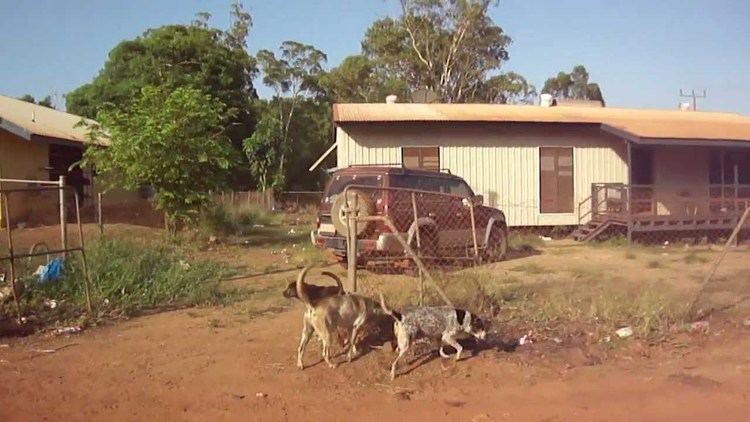Local time Monday 2:49 PM | ||
 | ||
Weather 30°C, Wind N at 14 km/h, 73% Humidity | ||
Maningrida is an indigenous community in the heart of the Arnhem Land region of Australia's Northern Territory. Maningrida is 500 km (311 mi) east of Darwin, and 300 km (186 mi) north east of Jabiru. At the 2006 census, Maningrida had a population of 2,068.
Contents
Map of Maningrida NT 0822, Australia
It is on the North Central Arnhem Land coast of the Arafura Sea, on the estuary of the Liverpool River. The Kunibídji people are the traditional landowners of this country. The name Maningrida is an Anglicised version of the Kunibídji name Manayingkarírra, which comes from the phrase Mane djang karirra, meaning "the place where the Dreaming changed shape." The town supports a population of 2,600 people, which includes those who live on the 30 homeland centres or outstations around Maningrida. Major players in the town's economic and political life include the "Maningrida Progress Association," the "Bawinanga Aboriginal Corporation," and the "Maningrida Arts and Culture" artists' co-op.
History
The township of Maningrida dates back to just after World War 2. Syd Kyle-Little, working for the newly formed Native Affairs Department, came up with the plan of a trading post to create a self-sufficient Aboriginal community, where the trading post became the central meeting point attracting tribes from the interior and surrounding coastal regions. A successful trading post was to stop the drift of Aboriginal people leaving their homelands and moving to Darwin. Its success would make Maningrida independent and not having to rely on welfare. Jack Doolan became Syd's cadet patrol officer and together they made the first white contact with the Aboriginal tribes since a hostile encounter with Mathew Flinders on his circumnavigation of Australia. This was converted by Dave and Ingrid Drysdale into a permanent Welfare Department settlement from 1957, partly to quell the post-war migration of Aboriginal people from the Blyth and Liverpool Rivers regions into Darwin. Patrols went out to spread the word and encourage people to move into the settlement. Within a few years, many people from the surrounding area were living in Maningrida.
On the night of 24 April 2006 Cyclone Monica, the most severe cyclone ever to strike Australia, passed just to the west of the community. Fortunately the community was spared the full brute force of the category 5 cyclone and infrastructure damage was only light to moderate.
Important Bird Area
Close to Maningrida is Haul Round Island which has been identified as an Important Bird Area because of its seabird breeding colony - one of the largest in the Northern Territory. The seabird eggs, mainly those of roseate and bridled terns, are often harvested as a food resource.
Culture
The north central Arnhem Land area now serviced by Maningrida extends from Marrkolidjban in Eastern Kunwinjku country to the west, to Berriba in Dangbon country in the south, and over as far as Yinangarnduwa, or Cape Stewart, in the east. In per capita terms, it is perhaps the most multilingual community in the world. The linguistic variety is echoed by the cultural diversity in the area, evidenced by the number of different religious ceremonies and the multitude of artistic forms in design, music and dance. People speak Ndjébbana, eastern Kunwinjku, Kune, Rembarrnga, Dangbon/Dalabon, Nakkara, Gurrgoni, Djinang, Wurlaki, Ganalbingu, Gupapuyngu, Kunbarlang, Gun-nartpa, Burarra, and English. Most people have command of at least three of these languages.
